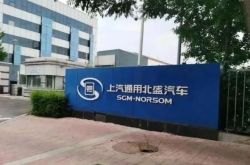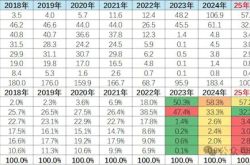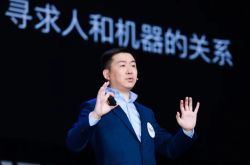Russia "Compels" Chinese Automakers to Adapt
![]() 11/12 2025
11/12 2025
![]() 381
381
The "Export Upheaval" in the Russian market is a result of the intricate interplay among market forces, policy shifts, and profitability dynamics.
"Previously, exporting a new energy vehicle to Russia could easily yield a net profit of tens of thousands of yuan," recounted Zhang Yun, a seasoned expert in auto exports. However, the current landscape has drastically changed. His company is now significantly scaling back its Russian operations, and numerous peers have already suspended their activities there.
This transformation signifies a complete reconfiguration of China's auto export strategy.
According to data from the China Passenger Car Association (CPCA), in the first nine months of 2025, China's auto exports to Russia plummeted by 58% year-on-year, reaching only 357,700 units. In contrast, Mexico emerged as the leading destination with 410,700 units, followed by the UAE with 367,800 units. Within just two years, Russia has slipped from China's top auto export market to the third position.
The "export upheaval" is rooted in a complex web of market, policy, and profitability factors.
A "Rollercoaster" Journey from Boom to Bust
The 2022 Russia-Ukraine conflict not only reshaped geopolitical landscapes but also exposed a significant "supply gap" in Russia's auto market.
Prior to the conflict (before 2022), European automakers (German and French) held a 30% market share, local automakers accounted for 25%, Korean brands for 20%, Japanese brands for 17%, and American brands for less than 10%.
With the collective withdrawal of Western automakers (from Europe, the U.S., Japan, and Korea), Russian automakers increased their market share to 40% by acquiring foreign stakes. However, the dual challenges of capacity and technology shortages transformed this "vacuum market" into a "golden opportunity" for Chinese automakers.
Leveraging smart features such as "refrigerators, TVs, and sofas" in their vehicles, along with price advantages, Chinese automakers swiftly rose to prominence. They captured over 50% of the market share in 2023 and surged to 60% by late 2024, with seven of the top 10 best-selling models being Chinese.

A Russian auto market insider revealed to reporters that Chinese brands experienced rapid growth due to two main factors: 1) other brands faced supply chain disruptions and steep price increases, and 2) some Chinese brands established local production, driving growth through localization.
Among Chinese brands, Great Wall Motors (GWM) was the pioneer, exporting Haval SUVs and pickups to Russia since 2004. Other brands like Chery, Geely, and Changan also established a local presence and distribution networks.
However, alliances in the auto industry are often transient.
In April 2024, Russia overhauled its customs clearance rules for vehicles imported via the Eurasian Economic Union (EAEU).
The loophole of avoiding taxes through transit countries like Kazakhstan was closed. Now, all saved duties, VAT, and excise taxes must be paid, causing customs clearance costs to soar. For a vehicle with a duty-paid value of 2 million rubles (approximately $18,000), the new rules add hundreds of thousands of rubles in taxes, equivalent to 15-20% of the selling price.
Stricter technical certifications further complicated the situation.
New energy vehicles (NEVs) must undergo renewed Russian GOST certification, with processes extending from three months to over six months, including extreme cold testing. A Chinese automaker executive disclosed: "Certification fees surged from 500,000 to 2 million rubles, plus 'expedited fees' for local labs. Otherwise, wait times exceed a year."
Under these policies, the average passenger car price in Russia surged from 2.29 million rubles (approximately $17,000) in 2022 to 3.35 million rubles (approximately $25,000), marking a 46%+ increase. Take the Haval H6, for instance: priced at around 2 million rubles in 2022, it now exceeds 3 million rubles after duties and certification fees, leading Russian consumers to quip, "Buying a Chinese car used to be a steal—now it's pricier than a used German model."
Beyond policies, product quality became a target for Russian media criticism.
Last year, the Russian business outlet Kommersant ran a headline: "Russian Taxi Drivers Dissatisfied with Chinese Cars," alleging that Chinese taxis fail after 150,000 km, while European or Korean models last 250,000-300,000 km. Some fleets reported that 70% of Chinese cars suffered short-term transmission failures.
Tests conducted by Russia's Larmark revealed that some Chinese models developed rust and perforations in the chassis after two years in -30°C conditions, while German models only exhibited surface oxidation. Siberian taxi drivers complained, "Chinese cars' glass heaters fail at -40°C, steering wheels freeze, and chassis corrosion from road salt triples."
Under these pressures, the "high-growth miracle" of Chinese automakers in Russia faces collapse.
In response, Cui Dongshu, Secretary-General of the CPCA, argued that Russia's manufacturing policies often reflect protectionism. When Western projects were prioritized, Russia hindered Chinese automakers' investments. After factory setup, uncertainties linger, reminiscent of the "expropriation" of Western automakers' Russian assets. Given Russia's weak auto competitiveness and supply gaps, Chinese automakers must preempt policy risks and prioritize safety.
Pivoting to "New Tracks" Amid Market Challenges?
Russian auto analyst Zaur Khantsev noted, "The government aims to compel Chinese automakers into local production—tax recoupment is a tool to that end."
In other words, Russia still desires to retain Chinese automakers.
Vitaly Mankevich, Chairman of the Russian-Asian Industrialists and Entrepreneurs Union, stated bluntly, "Chinese cars are a 'timely relief' for Russia, but long-term success requires adaptation." He urged automakers to shift focus from luxury off-roaders (priced over 4 million rubles, approximately $35,000) to "affordable models" and deepen ties with taxi and ride-hailing services to dominate daily commutes.
Nizhny Novgorod Vice Governor Starostin extended an "olive branch," stating, "We offer the best terms to lead Chinese automakers' localization."
Mankevich calculated that local production could cut tariffs and logistics costs by over 30% while avoiding sanctions. He advised using Russian IT for sales management and partnering with local banks and insurers to build a "localization ecosystem."
Great Wall Motors (GWM) took the lead in Russia.
Its Tula plant employs KD (knocked-down) assembly, achieving over 65% localization, avoiding steep import duties while qualifying for Russian industrial subsidies.
Currently, aside from GWM's wholly-owned plant, Chery and JAC rely on joint assembly with local firms. Mankevich urged, "Chinese automakers must transition from 'shell partnerships' to standalone factories—otherwise, they'll remain vulnerable."
Amid Russia's complex domestic market, some Russian automakers are exploring international opportunities.
Iran's auto market, with its unique advantages and potential, has attracted Russian automakers. Data projects Iran's auto industry to grow from $37.96 billion in 2024 to $59.93 billion by 2029, marking a 9.57% CAGR, highlighting its vibrancy and potential.
Leveraging this, Russia's largest automaker, AvtoVAZ, plans to localize Lada production in Iran.
AvtoVAZ also outlined a broader expansion strategy, targeting Iran, Kazakhstan, and Vietnam for 2025 exports. Earlier attempts to enter Iran were stalled by U.S. sanctions, but recent Russia-Iran cooperation has revived automotive ties.
For Russian automakers, success in Iran could enhance brand influence, boost market share, and leverage Iran's geopolitical clout to expand regionally.
As AvtoVAZ assembles Ladas in Tehran, Chinese automakers should take note of the rise of Iran, Southeast Asia, and other emerging markets as "second-act" opportunities. True globalization means diversifying beyond single markets to find fertile ground.
Russia's market chill won't freeze Chinese automakers' global ambitions—this "export upheaval" may just be the prologue to a global auto industry reshuffle. The next chapter for Chinese automakers is shifting from "price wars" to "value wars" and growing new roots amid policy and market constraints.
Note: Images sourced from the internet; contact for removal if infringed.
-END-







